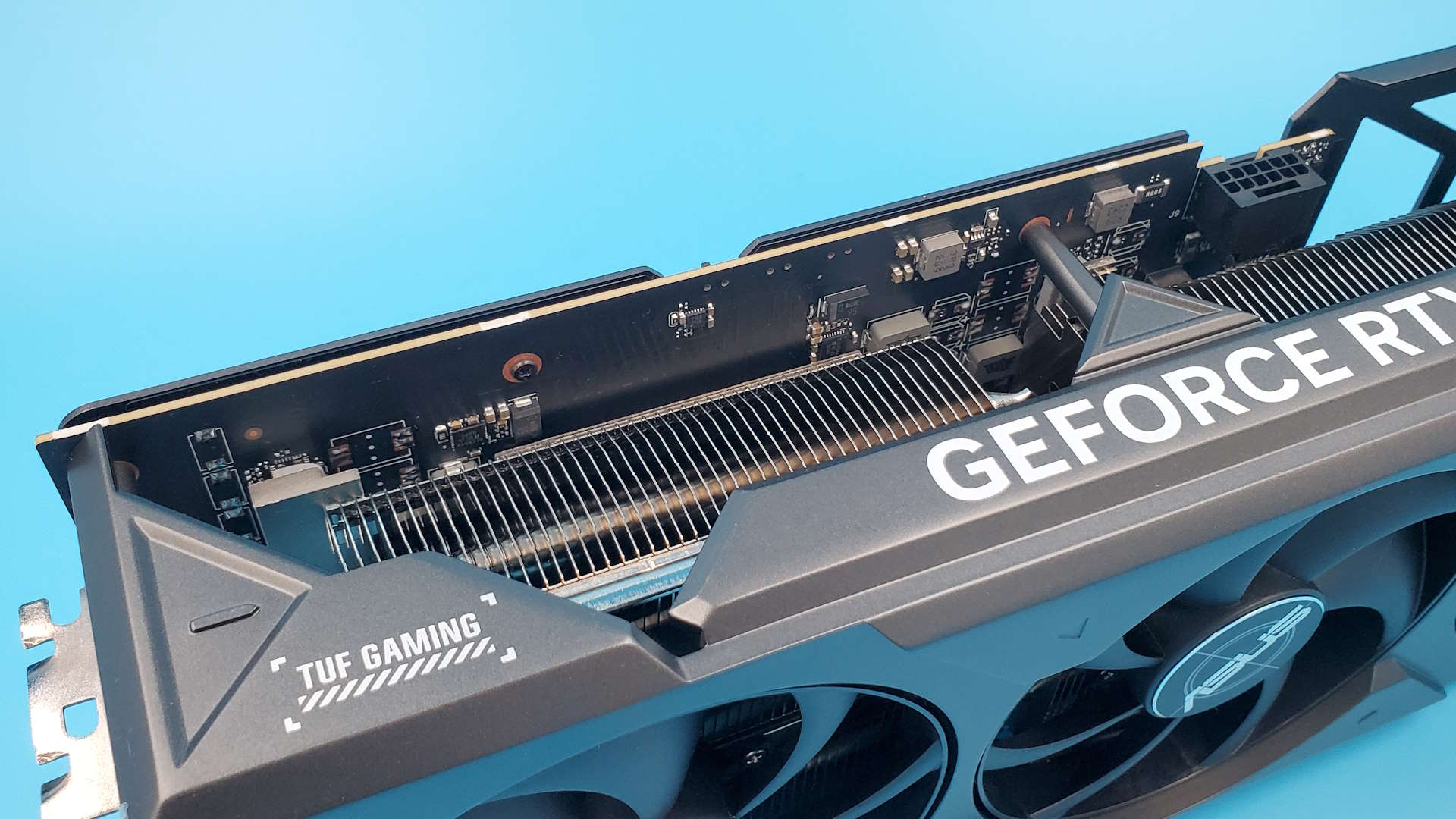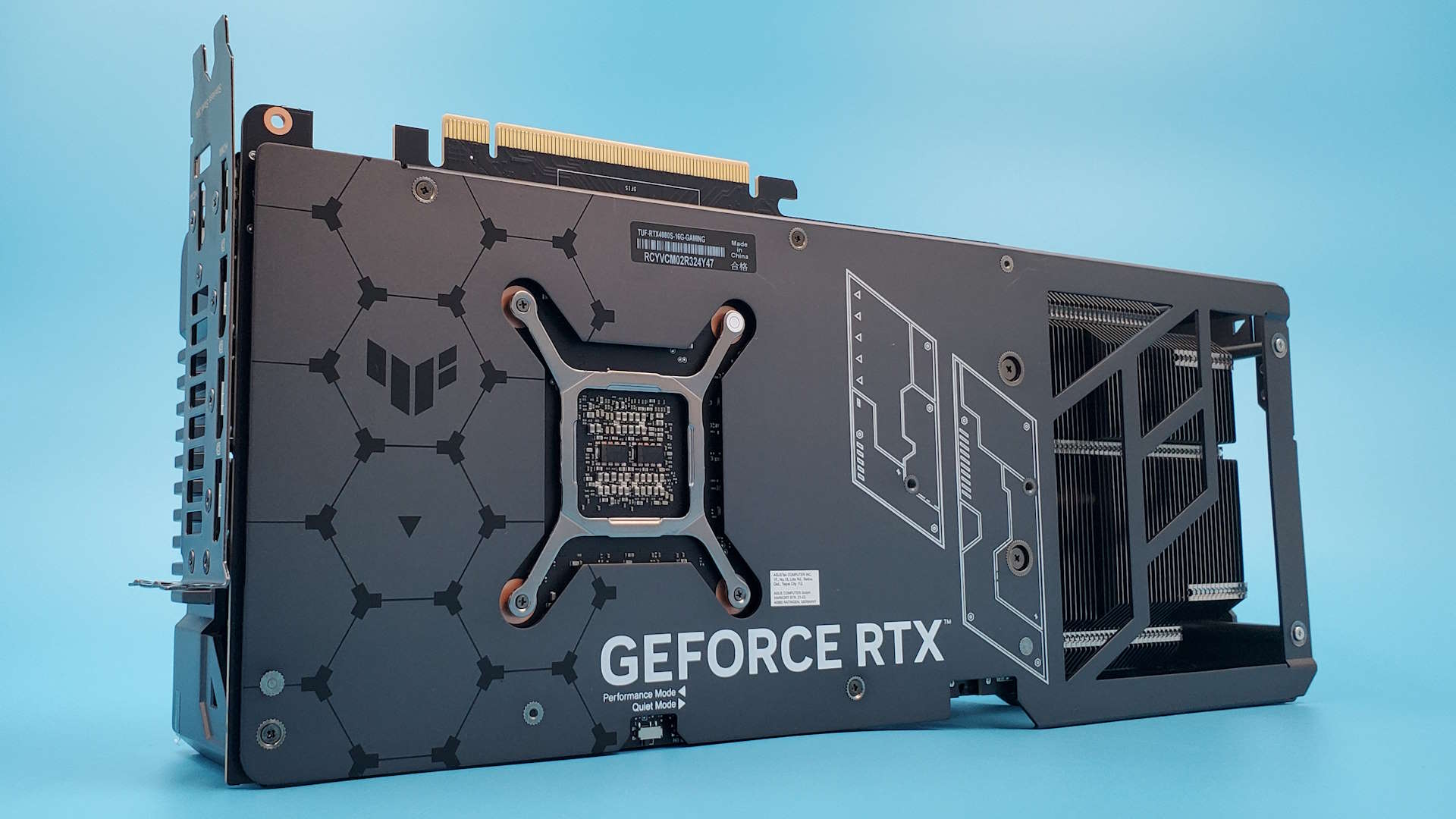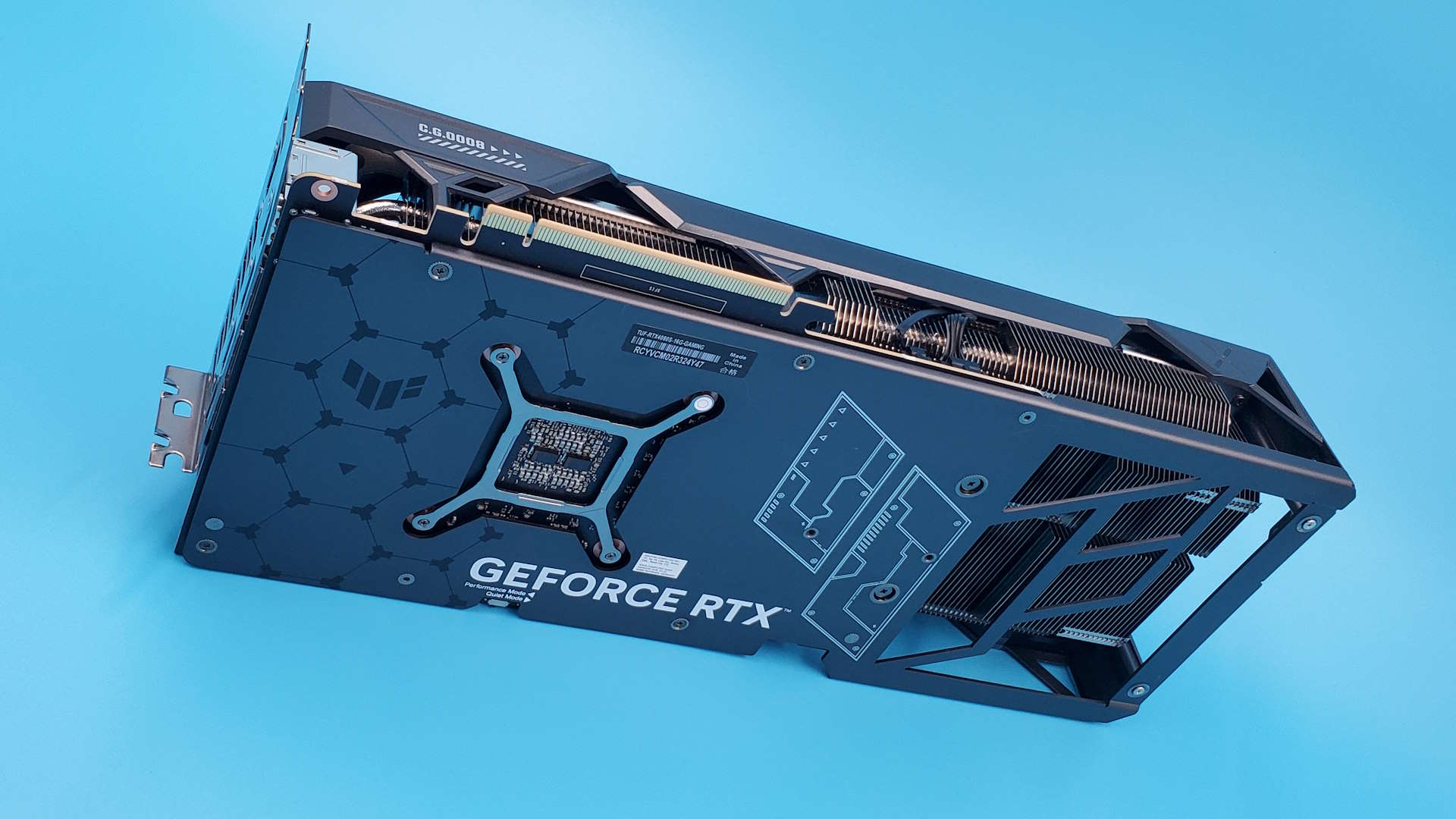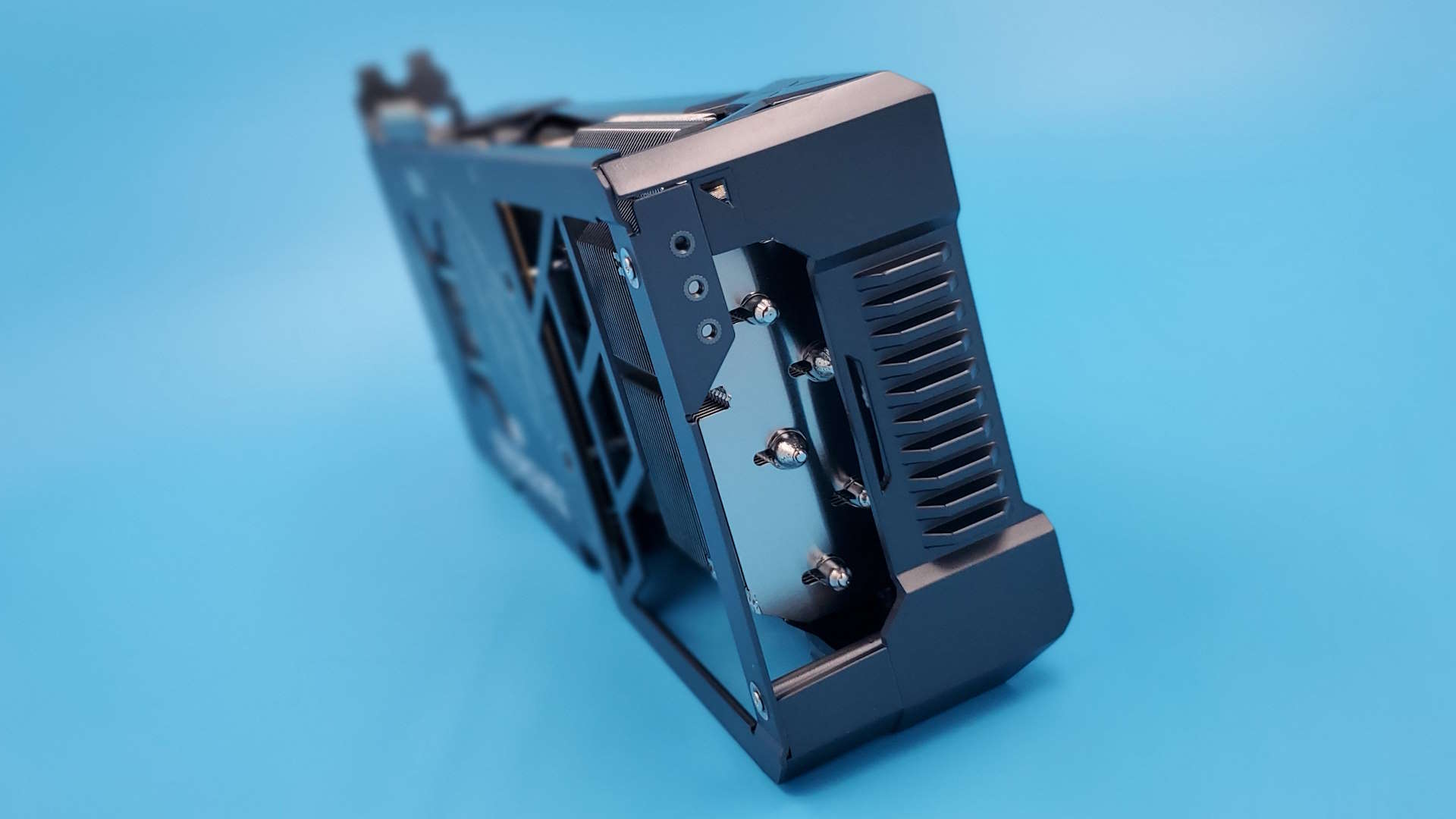Our Verdict
With an ultra effective cooler and performance on par with the RTX 4080 Super Founders Edition, the Asus TUF Gaming card makes a mockery of the premium-priced versions of Nvidia's new second-tier Ada GPU. You really don't need to pay above MSRP when there are cards like this around.
For
- Same price as Founders Edition
- Effective, and quiet cooler
- Excellent gaming performance
Against
- Not much of a looker
- $999 is still a lot of cash for a GPU
- OC mode adds almost nothing
PC Gamer's got your back
Asus latest big boi GPU is the TUF Gaming RTX 4080 Super, a reference priced, modestly overclocked card from the classic Nvidia board partner. That makes it a $999 GPU, $200 less than the original RTX 4080, but with essentially the same performance. Job done. And if you can't get your hands on an Nvidia RTX 4080 Super Founders Edition version of the latest GeForce card, then I'd suggest the Asus is as good as any MSRP GPU you'll find.
Since Nvidia introduced its Founders Editions as the GeForce-built reference option for its latest graphics cards—and not the pricier premium option it was in the RTX 20-series—the FE cards have been the ones we recommend. Nvidia's own cards are over-engineered to the point of excellence. They're pretty, in a pretty understated kind of way, and with this Super series have only gotten better looking.
They're also cooler and sometimes even quieter than the third-party coolers the likes of Asus, MSI, and Zotac will jam on top of their GPUs. But they're also the ones guaranteed to be stuck at the MSRP, and therefore the ones that will sell out the fastest.
So, if you're out of luck when it comes to picking up a Founders card then what do you do? I would always argue, especially with this RTX 40-series sporting the efficient Ada architecture, that you should only consider another card at Nvidia's MSRP. Every add-in board partner will create a host of different versions of a new graphics card, and often a bunch of 'premium' options with over-the-top coolers, extreme lighting elements, and some sort of factory overclock to try and justify the extra expense.

GPU: Nvidia AD103
Lithography: TSMC 4N
Boost clock: 2,580MHz OC mode | 2,550MHz default
Cores: 10240
SMs: 80
RT cores: 80
Tensor cores: 320
Memory: 16GB GDDR6X
Memory speed: 23Gbps
TGP: 320W
Price: $999
And they're just not worth the extra money. Chris has recently reviewed the Zotac RTX 4080 Super Amp Extreme Airo, a $1,100 version of Nvidia's new card, and while it does deliver a higher clock speed than the Founders Edition card, it's only giving you another 5% higher clock speed on average. Which is but a handful of frames per second at best.
In other words, the extra factory overclock performance is negligible and, I would argue, invisible to the end user.
Nvidia's RTX 40-series is also seriously expensive. Even with the RTX 4080 Super seeing $200 lopped off its forebear's original $1,200 price tag, it's still a hell of a lot of money to spend on a graphics card. And when that price cut is the main thing the RTX 4080 Super has to offer over the original RTX 4080, then you don't want to eat into that by buying an expensive premium option with zero tangible benefits.
Hell, the overclocked Zotac card is a lot hotter and louder than the Founders card and, importantly, than this MSRP Asus RTX 4080 Super, too.
This is the thing with Nvidia's modern graphics cards, the Ada architecture is super efficient and the sort of hefty triple-slot+ cooler Asus is able to drop onto even its reference-priced cards is going to be more than a match for the powerful AD103 GPU at the heart of the RTX 4080 Super.
So, why pay more?




The RTX 4080 Super is the least interesting of the Super GPU refreshes when it comes to actual silicon changes.
There's not a lot to say about the architecture pinning down this Asus RTX 4080 Super card. It's using the same GPU as the RTX 4080, just with the full streaming multiprocessor (SM) count enabled this time around. That means you get 80 SMs instead of 76, and therefore 10240 CUDA cores instead of 9728.
It's also running 23Gbps GDDR6X memory instead of 22.4Gbps, giving it a little extra memory bandwidth for its aggregated 256-bit memory bus.
And that's it. The RTX 4080 Super is the least interesting of the Super GPU refreshes when it comes to actual silicon changes, and also when it comes to performance gains. The new Nvidia GPU really is leaning heavily on that $200 price cut to give it the win.
This Asus TUF Gaming RTX 4080 Super does get a slight clock speed bump in its OC mode, accessible via a slide switch attached to the PCB. The standard RTX 4080 Super boost clock is 2,550MHz, while the OC clock speed is rated at 2,580MHz. Though given the dynamic nature of Nvidia GPU frequencies that's a limit you will never see as the chip will likely always be clocked higher during gaming loads.
It's just a 30MHz overclock, and on average we were actually seeing less than that in terms of the frequency advantage over the FE card in real world benchmarking. But it was always well above the rated speeds Asus gives out in the specs sheet at least.
But, what does all that mean in performance terms? Well, not a lot, to be honest. The RTX 4080 Super FE is only around 1 - 2% quicker than the original RTX 4080 and in my testing it's even tighter between the older card and this Asus TUF version. That's not necessarily a bad thing, as the RTX 4080 Super is an incredibly capable GPU, offering 4K gaming performance you'd be absolutely happy with even if it didn't have the option of DLSS 3 and Frame Generation backing it up.
I couldn't care less about what it looks like if it performs in terms of frame rates, thermals, and acoustics. And the Asus ticks those boxes with aplomb.
Aside from the heavily ray traced Cyberpunk 2077, that is. Even with the RTX 4090 you can only expect to see native frame rates of around 40 fps at Ultra 4K settings. But with the rest of our benchmarking suite you're looking at around 60 fps at worst and triple digits more often than not.
The competition for the RTX 4080 Super doesn't really come from within the different cards available from the different board partners, however. It comes from AMD. The Radeon RX 7900 XTX was always laser-focused on the RTX 4080, able to trade blows with the GeForce GPU, riding high on raster performance but falling behind in ray tracing workloads.
I'd suggest that now the prices are practically the same, the AMD GPU has lost a lot of its edge. Now that it's more or less equal the weight of support for DLSS 3 and Frame Generation, and the widening support for ray tracing as a whole, would have the scales tipping towards the Nvidia option.
In terms of the actual graphics card experience, even with the OC mode enabled, the Asus card manages it in a whisper quiet way that you'd never hear over the system fans of your PC. On our open test bed I have to stick my ear right next to the fans to hear them make a sound even under full 4K loads.




✅ You can't bag a Founders card: If you're after an RTX 4080 Super, but the FE cards are all sold out, then Asus MSRP offering is a worthy alternative at the same price.
✅ You want a significant upgrade on a previous gen card: Compared with even the best the RTX 30-series had to offer, the RTX 4080 Super is way out in front.
❌ You're not playing games at high resolutions: Don't pick up a $1,000 GPU to hit high frame rates at 1080p. The RTX 4080 does its best work at 4K.
❌ You have patience: The Founders cards will come back into stock, and I'd suggest there's a good chance RTX 4080 Super cards will come back in stock relatively quickly after the first flush of FE options sells out.
But it's not a pretty card. It's a 3.5-slot monster, no matter what the dual-slot bracket might want you to think. That chonky rectangular cooler spills out into a fourth slot in your PC. A small form factor card, then, this is not. It's all fat heatsinks, big fans, and angular shroud.
Yet, while I will admit to being very taken with the matte black finish of the RTX 4080 Super Founders Edition card, in reality I couldn't care less about what it looks like if it performs in terms of frame rates, thermals, and acoustics. And the Asus ticks those boxes with aplomb. Once a graphics card is embraced by my motherboard and locked away inside my PC case I am always going to spend more time looking at my screen than gazing lovingly at the expensive slices of silicon inside my rig.
I still think $999 is a ludicrous amount of money to charge for a graphics card, but the Super price correction at least plants the second-tier Ada card in a more reasonable position within the RTX 40-series stack. You can read about my feelings for this tier of GPU in the full RTX 4080 Super review. But no matter what, I cannot, in good conscience, recommend anyone spend more than MSRP on a third-party card, especially when those MSRP cards can be this good.
Asus knows how to make a graphics card—and sure, it has its own premium priced ROG versions—but the TUF Gaming RTX 4080 Super packs more than enough to make it a worthwhile alternative for those unable to bag a sought-after Founders Edition.
With an ultra effective cooler and performance on par with the RTX 4080 Super Founders Edition, the Asus TUF Gaming card makes a mockery of the premium-priced versions of Nvidia's new second-tier Ada GPU. You really don't need to pay above MSRP when there are cards like this around.

Dave has been gaming since the days of Zaxxon and Lady Bug on the Colecovision, and code books for the Commodore Vic 20 (Death Race 2000!). He built his first gaming PC at the tender age of 16, and finally finished bug-fixing the Cyrix-based system around a year later. When he dropped it out of the window. He first started writing for Official PlayStation Magazine and Xbox World many decades ago, then moved onto PC Format full-time, then PC Gamer, TechRadar, and T3 among others. Now he's back, writing about the nightmarish graphics card market, CPUs with more cores than sense, gaming laptops hotter than the sun, and SSDs more capacious than a Cybertruck.

